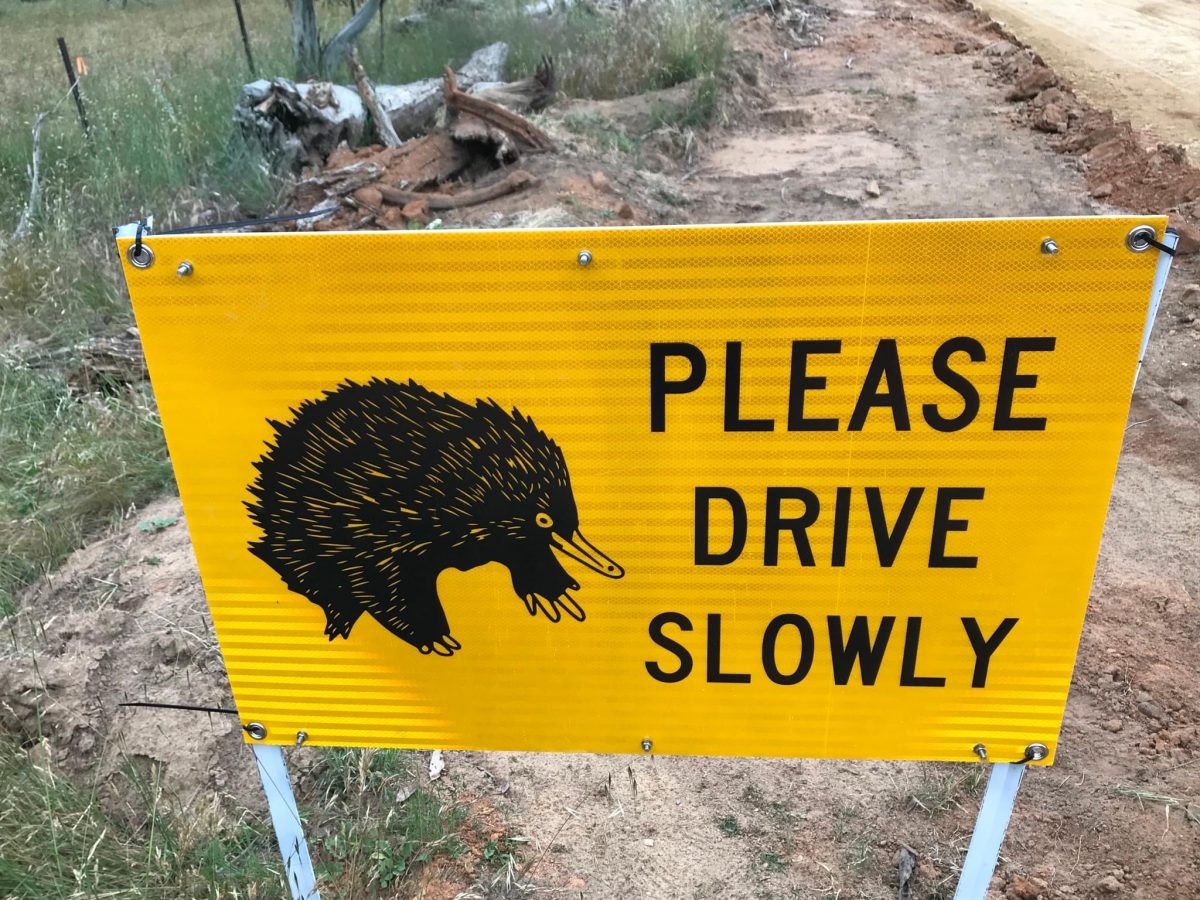
Wildlife Rescue Group LAOKO has arranged for wildlife warning signs to be erected on Snowy Monaro roads. Photo: Cheryl Dickson, Snowy Mountains Wildlife Rescue (LAOKO) volunteer.
Drivers are being advised to take care during the long weekend and school holiday travel.
Both the NRMA and wildlife rescue group LAOKO (Looking After Our Kosciuszko Orphans) are reminding motorists to take care while driving through the Snowy Monaro region, especially over the Easter long weekend.
The warning follows the release of new NRMA data which reveals there were more than 13,800 animal collisions on NSW and ACT roads throughout 2021 and 2022.
Sadly, Jindabyne is among the top five hotspots for collisions with animals.
According to NRMA Insurance claims data, most incidents took place in autumn and winter, when the days become shorter and darker.
President of LAOKO, Lisa Petroff, said, “Sadly, the increased volume of traffic on our roads during holiday times equates to many calls for assistance to LAOKO’s emergency wildlife help hotline from drivers who have collided with wildlife.
“The Snowy Mountains region of NSW is a much sought-after holiday destination and we urge visitors to slow down on our roads, particularly when driving at dawn and dusk when many of our local wildlife species are extremely active.
“Driving 10 kms slower can increase your reaction time for wildlife that suddenly appear on the road which will not only save an animal’s life, you’ll save yourself a costly insurance claim and allow you to enjoy your holiday in peace.
“If you need emergency assistance with injured or orphaned wildlife, please call Snowy Mountains Wildlife Rescue (LAOKO) on 6456 1313.”
NRMA Insurance Executive Manager Motor Assessing David Wilkes urged drivers to be wary of animals when driving at dawn, dusk, or at night, particularly with more people travelling on regional roads during the upcoming school holidays.
Dubbo is the most dangerous hotspot for animal collisions across NSW and the ACT, followed closely by Canberra and Goulburn.
“It’s important for drivers to be aware of the heightened risk of animal collisions when temperatures decline, and the daylight hours become shorter. During this time there is decreased visibility for drivers and increased wildlife activity,” Mr Wilkes said.
NRMA Insurance claims data in NSW and ACT shows that July is the worst month for animal collisions. Drivers are most likely to collide with a kangaroo, which account for 83 per cent of all animal collisions in NSW and 93 per cent in the ACT.
“It’s awful to hear firsthand the shock and distress from our customers who have experienced an animal collision. The damage to a vehicle can be significant and can cause injuries to drivers and passengers,” Mr Wilkes said.
“Sadly, the number of animals hit on our roads remains consistent year after year. Animals are unpredictable and how you react will help protect our wildlife, vehicles and potentially even lives, so it’s important to be alert.
“If you see an animal on the road while driving, try to slow down, brake safely and don’t swerve to avoid it, as you run the risk of colliding with another car or running off the road.”
NRMA Insurance safety advice for drivers:
- If you can, avoid driving at dawn, dusk, or nighttime as this is usually when animals are most active, and lack of light makes it more difficult to see them.
- Reduce your speed inside signposted wildlife areas.
- If you see a kangaroo on or near the road, you should try to brake, but not swerve.
- If you hit an animal, if it is safe to do so, you should check the animal’s welfare and call your local wildlife rescue service.







